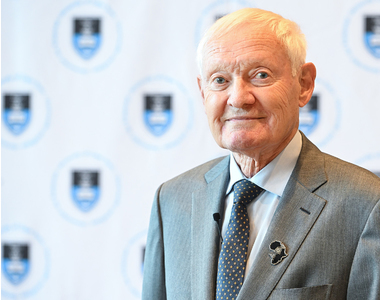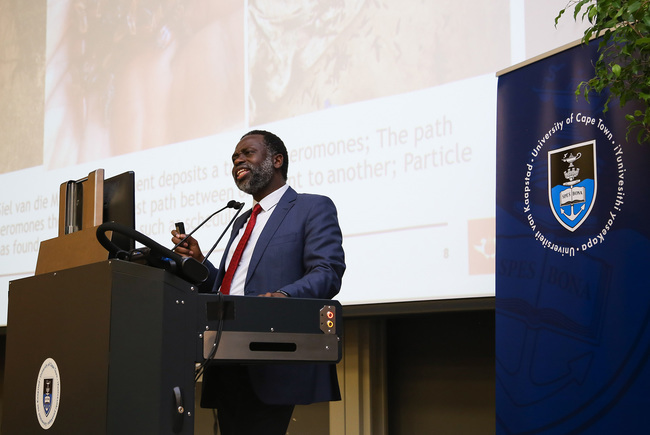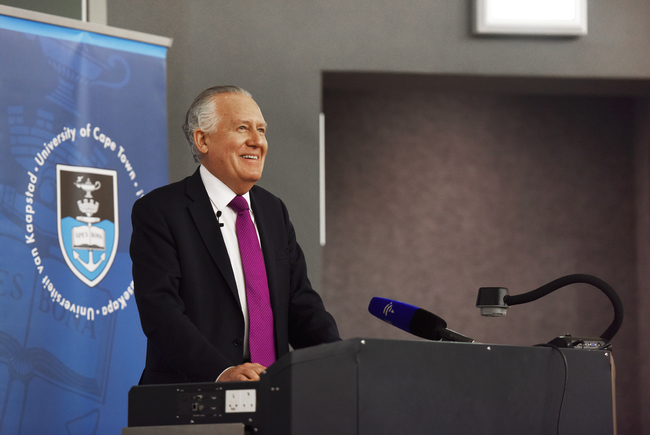Made in the stars
15 July 2014 | Story Helen Swingler.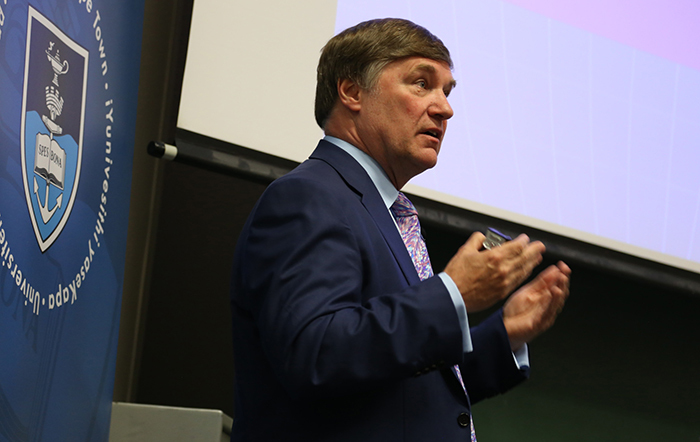
It's four billion years from now. Earth is no longer habitable as our sun, now a massive red giant, has turned the planet into a hot, barren wasteland. Man '“ if he survived in an earlier age '“ has perhaps colonised a retreat in the galaxy. And in the night sky, the stars are no longer visible. Not a glimmer in the darkness from a distant planet or dusty constellation.
Because the universe has been expanding since shortly after the Big Bang 14 billion years ago, the planets and stars are receding further and further from Earth, "like raisins in a rising dough", until they can no longer be seen.
And the universe is so vast that if you emptied all the atoms from space and spread them equally in an array, you'd have one atom for every cubic metre, a reflection, says Cambridge cosmologist Professor John Barrow, of the enormous amount of expansion the universe has undergone across the aeons.
Old, big, dark and empty.
"As conditions for life, it's antithetical really," said Barrow during his 9 July Vice-Chancellor's Open Lecture on the evolution of the universe.
But old, big, dark and empty are all intimately connected to a process we call life.
Habitable zone in a time sandwich
"We live in a habitable zone of cosmic history," added Barrow, "after the stars have formed so they can provide life-forming building blocks and environments for life, but before the stars have died."
After the universe was a quarter of a million years old, it began to form simple atoms, like hydrogen, and simple molecules. As it expanded, these atoms and molecules, along with other neutrino-like particles, slowly condensed to form all the galaxies and stars through complex processes involving nuclear reactions and other radiation processes.
"But on at least one planet in one of the solar systems, biochemistry developed and evolved into things like you and me," said Barrow. "We've no idea whether this is a process that has happened elsewhere, rarely, or even commonly. Maybe one day we will.
"The materials that made life of our sort possible; the elements heavier than hydrogen and helium, like carbon, don't appear ready-made in the universe or arise in its earlier stage. They formed in the later supernova deaths of stars when they implode and undergo dramatic periods of nuclear synthesis.
"So it's no surprise the universe is so old; if you want to have the building blocks of complexity to make you and me and all other things we see, we need nearly 10-billion years of expansion.
"It's a remarkable interplay between time, space, density and temperature."
What's the big deal?
The vastness of it all perplexed at least one member of the audience who, during question time, asked testily: "So what's the deal? Why even study it?"
It's a germane question in light of recent scientific developments: the country now hosting a significant portion of the Square Kilometre Array, which will help us see back into the universe's "dark ages"; and the Large Hadron Collider at CERN (the European Organisation for Nuclear Research) where researchers reported having glimpsed the elusive Higgs boson particle, and in the next experimental runs of the collider hope to identify the mysterious neutrino-like particles that make up the dark form of matter that dominates the make-up of galaxies, and even to find some clues to the remaining dark energy that makes up 68% of the universe and accelerates its present-day expansion.
Dark energy has a lot to explain.
When the universe was 75% of its present size, expansion "changed gear" from deceleration to acceleration. This process required the presence of anti-gravitational material: dark energy.
"So we see evidence of its existence but we don't know what this dark energy is," said Barrow. "We believe it to be the quantum vacuum energy of the universe."
It remains the greatest unsolved mystery in cosmology and particle physics.
Young particle sleuths needed
"I suspect this great problem in fundamental physics will be solved by someone currently very, very young, maybe one of the students taking part in the International Maths Olympiad." [Barrow delivered his address during the IMO, attended by participants from 104 countries and hosted at UCT in July.]
Other scientists are trying to map cosmic radiation patterns in the universe, the faint signals of its cataclysmic beginnings, which provide "mountains of information" to help answer other big questions.
Tantalising information has come from the BICEP2, the second generation Background Imaging of Cosmic Extragalactic Polarisation telescope experiment, at the South Pole where John Kovac, a radio astronomer at the Harvard-Smithsonian Centre for Astrophysics in Cambridge, Massachusetts and his fellow radio astronomers say they have found the imprint of gravitational waves from the Big Bang.
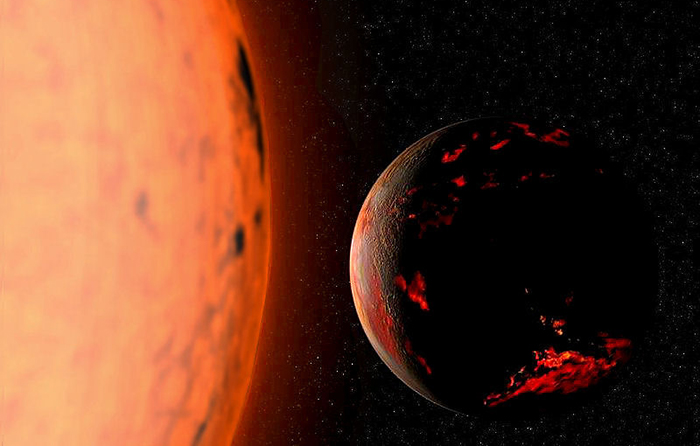
Scientific journal Nature describes this as the "signal of gravitational waves seen in the polarisation of the cosmic microwave background '“ similar to the kind of polarisation that certain sunglasses block over a small patch of sky".
The article continues: "This polarisation map, which is reminiscent of the way iron filings arrange themselves on a surface under the effects of a magnetic field, was found to have particular vortex-like, or curly, patterns known as B modes. The presence of B modes is a tell-tale sign of the passage of gravitational waves generated during inflation, a brief period during which the universe underwent an exponential expansion, right after its birth."
"If the findings stand up," continues the report, "they will put the current preferred picture of cosmology on solid foundations, and could have significant implications on fundamental physics as well."
There's been intense scrutiny of this claim, says Barrow.
"The type of polarisation signal they see in the background can be mimicked by the effects of dust in our own Milky Way galaxy. So when the radiation from the background comes through our galaxy, it can have imprinted on it a signal of that same polarising sort by interacting with the dust."
What's needed are further observations at different frequencies, and the full galaxy dust map that the Planck Mission team will publish in October. Then we will be able to see whether the BICEP2 observations are of a dusty region. If so, the evidence for gravitational waves will no longer be persuasive, Barrow says.
Fast forward
As our understanding of the universe is aided by new techniques of observation, there's as yet nothing to tell us whether we live in a multiverse (with parallel "universes") or what the geography of space looks like in the furthest reaches of the universe.
As for the long-term forecast, our universe is getting bigger, darker, emptier and colder.
Closer to home, our own sun is also undergoing a slow evolution. In around 5.4-billion years it will undergo a "serious energy crisis"; expanding dramatically into a red giant and then imploding to a dense mass the size of the Earth, a white dwarf; a glowing cinder getting cooler and cooler until it gradually disintegrates.
The long-range view of the universe may be pessimistic, but it's all relative, says Barrow.
"There's no need to worry unduly about the fate of the universe as a whole. After all, things are bad enough in our solar system. In order for life on Earth, or its imprint, to survive the death of the sun, our descendants will need to go elsewhere. But we have more pressing problems to solve long before then."
Listen to Prof Barrow's lecture (49.9 mb)
View Prof Barrow's PowerPoint presentation
 This work is licensed under a Creative Commons Attribution-NoDerivatives 4.0 International License.
This work is licensed under a Creative Commons Attribution-NoDerivatives 4.0 International License.
Please view the republishing articles page for more information.
The Vice-Chancellor’s Open Lecture Series
The Vice-Chancellor’s Open Lecture series was established to enable anyone in the community, whether they are connected to the university or not, to have the benefit of hearing first-hand from academics, researchers and innovators from South Africa, but particularly from those around the world, who have distinguished themselves in their areas of expertise.
Attendance to the lectures is free of charge as the series is one of the ways that UCT seeks to give back to the Cape Town community.
2024
2023
2022
2021
2020
2019
2018
2017
2016
2015
There was no lecture in 2015.







